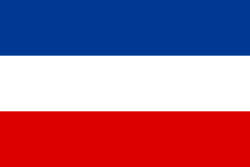
C type crash in Belgium
Entering service in 1915, the Rumpler C.I, company designation 5A 2,[1] two-seater single-engine reconnaissance biplane, was one of the first German C-type aircraft, and also one of the longest serving in its class during World War I, being retired from the last front line units only in early 1918.
Design and development
The C.I was a successful design, and it was used on Western and Eastern Fronts, Macedonia, Salonika and Palestine. Early production examples were armed only with a single Parabellum machine gun on a Schneider ring mounting, but later aircraft had additionally a synchronised Spandau gun on the port side of fuselage. When used as a light bomber the C.I could also carry 100 kg of bombs.
In addition to the parent company, the Bayerische Rumpler-Werke, the Rumpler C.I was also produced by the Germania Flugzeug-Werke, the Märkische Flugzeug-Werke, the Hannoversche Waggonfabrik and the Albert Rinne Flugzeug-Werke. Variants included the C.Ia, which used a 180 hp Argus As.III engine instead of Mercedes D.III, the C.II, of which there's no evidence that any were actually built, 6B-1 single-seat floatplane fighter, and a Rumpler-built batch of C.Is intended for training which omitted the gun ring in the rear cockpit and was powered by a 150 hp Benz Bz.III.
It was this training role in which the C.I was latterly used, its friendly handling qualities making it suitable to be flown even by inexperienced pilots.
Operators
-
 German Empire
German Empire
 Latvia
Latvia
-
 Poland
Poland
-
 Turkey
Turkey
-
 Kingdom of Yugoslavia
Kingdom of Yugoslavia
Specifications (C.I)
General characteristics
- Crew: 2, pilot and observer
- Length: 7.85 m (ft in)
- Wingspan: 12.15 m (ft in)
- Height: 3.05 m (ft in)
- Wing area: 35.70 m² (ft)
- Empty weight: kg (lb)
- Loaded weight: 1330 kg (lb)
- Useful load: kg (lb)
- Max. takeoff weight: kg (lb)
- Powerplant: 1 × Mercedes D.III water-cooled in-line, 160 hp (120 kW)
Performance
- Never exceed speed: km/h (mph)
- Maximum speed: 152 km/h at sea level (mph at ft)
- Cruise speed: km/h (mph)
- Stall speed: km/h (mph)
- Range: 4 hours (of flying time)
- Service ceiling: 5050 m 16,579 ft (ft)
- Rate of climb: minutes to m (minutes to ft)
- Wing loading: kg/m² (lb/ft²)
Armament
- 1 × fixed forward-firing 7.92 mm LMG 08/15 with an interruptor gear on the port side of the fuselage (in later aircraft only)
- 1 × 7.92 mm Parabellum MG14 machine gun on a Schneider ring mounting
- 10 × 10 kg bombs
See also
- Aircraft of comparable role, configuration and era
References
- Notes
- ↑ Gray, Peter & Thetford, Owen. German Aircraft of the First World War. London, Putnam. (2nd Ed.) 1970. ISBN 0-370-00103-6
- Bibliography
- Munson, Kenneth - Bombers, Patrol and Reconnaissance Aircraft 1914 - 1919 ISBN 0-7537-0918-X
- Munson, Kenneth - Fighters, Attack and Training Aircraft 1914 - 1919 ISBN 0-7537-0916-3
- Gray, Peter & Thetford, Owen. German Aircraft of the First World War. London, Putnam. (2nd Ed.) 1970. ISBN 0-370-00103-6
|
|---|
| | Fighters | |
|---|
| | Bombers and Ground Attack | |
|---|
| | Reconnaissance | |
|---|
| | Trainers | |
|---|
| | Prototypes | |
|---|
|
Idflieg C-, CL-, CS-, and CLS-class aircraft designations |
|---|
| | C- and CL- | |
|---|
| | CLS- | |
|---|
| | CS- | |
|---|
|
|
|---|
| | People and aircraft | |
|---|
| | Campaigns and battles | |
|---|
| | Entente Powers air services | |
|---|
| | Central Powers air services | |
|---|
|
|
|---|
| | General | |
|---|
| | Military | |
|---|
| | Accidents/incidents | |
|---|
| | Records | |
|---|
|
